Our Museum founder and first curator Bertram Frank, usually known as Bert, was an avid diarist. This is always extremely helpful for historians – or for anyone trying to tell the story of the development of a museum!
On 28 April, 1968, Bert noted: ‘if interest had been aroused three thousand miles away, surely we could do something about an object only three miles away!’
He was referring to a letter from the Conning Museum of Glass in New York. They’d sent him an enquiry about evidence of the nearby Rosedale Glass House, recently unearthed, literally, in the North York Moors.
The glassworks were exceptionally rare. They took the form of a huge stone furnace, dating from the sixteenth century. It provided evidence of the secret activities of clandestine glassblowers in the remote moorland site. Before this, nobody in the area had any idea that the North York Moors had been a base for illegal glassmaking. It was an exciting discovery.
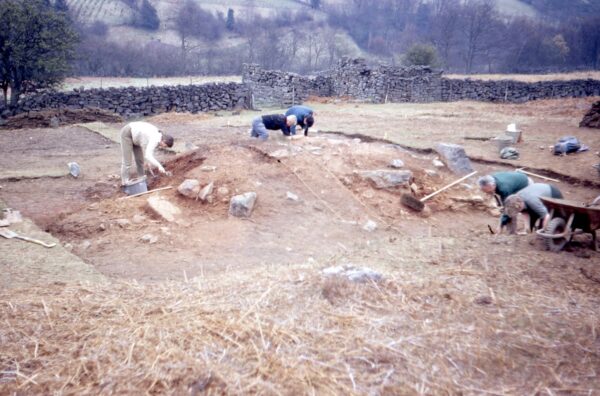
An excavation underway
Raymond’s role
Bert noted in his diary that the furnace was, ‘of course’, located by Raymond Hayes. Raymond was the Hutton-le-Hole photographer, esteemed archaeologist and local postman beloved by many. According to his friends, Raymond spent much of his spare time ‘roaming’ the Moors, looking for evidence of human activity.
Raymond’s interest in archaeology developed as a schoolboy in York. There, he spent time admiring the city walls and visiting the Yorkshire Museum. However, Raymond came to a career in archaeology by an unusual route, first as a photographer, taking up the reins of his father’s Daylight Photography Studio that can be seen at the Museum.
Raymond’s photography skills were particularly useful on archaeological digs. Over time, he also became an expert on the archaeology of the region. He published several books of historic importance with his knowledge of the area from the Mesolithic period to recent industrial times. By the time work began on the glass furnace, Raymond had already been awarded an MBE for his services to archaeology, receiving it from the Queen Mother in March, 1966.
Today, the glass furnace can be seen under a specially-created cover at the Museum as part of your family day out on the North York Moors. But in 1968, Bert and Raymond were faced with the challenging task of relocating it from its particularly isolated and waterlogged location.
Overcoming obstacles
Access was to prove especially difficult. Museum Blacksmith, Robin Butler, had been with Raymond during the initial discovery. His physical strength was to be put to use once more during the moving process. Years later, he recalled that one of the stones weighed in the region of three-quarters of a tonne.
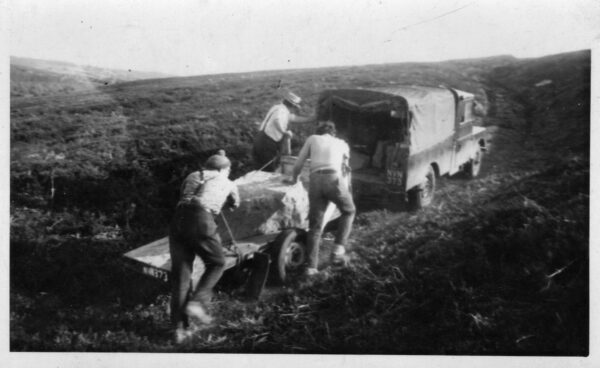
Moving the heavy furnace stones
In the first instance, a stone causeway had to be painstakingly created through the boggy terrain. This was accomplished over the summer of 1968, with several men on site each day. At last, the heavy furnace – which the men measured as 18 feet by 24 feet – could be manoeuvred with assistance from a Land Rover.
Later, Robin attributed their success to sheer determination: ‘it didn’t matter how difficult a thing was, we’d find a way to achieve it.’
Today, the furnace still stands at the Museum. It is believed to be the only glass furnace of its kind in the country, similar instead to those of the Lorraine style. Moreover, our furnace casts light on a moorland industry about which little would otherwise be known.
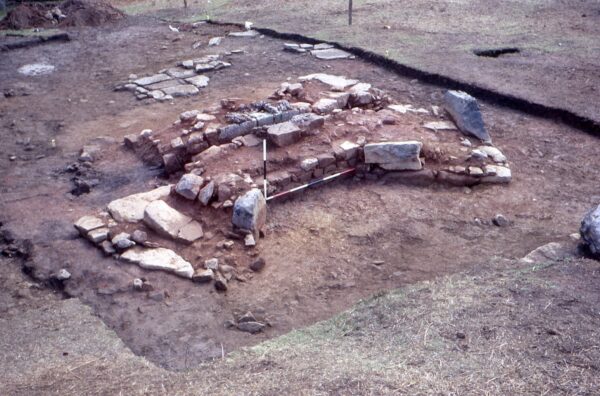
The Furnace Unearthed
Who were the glassmakers?
It is now believed that the Rosedale Glassmakers were Huguenots, most probably fleeing religious persecution. We can only imagine the devastation experienced by these master glassmakers when they arrived in England and discovered that a special licence was required for glass production. These were rarely granted.
Rosedale must have offered isolation, facilitating their secretive work. However, it also provided important ingredients such as local sand and lime, as well as woods for fuel for the furnace and for shelter. Importantly, there was also bracken which, when burned, yields sodium oxide to enable sand to melt.
In total, three furnaces have been uncovered, in Rosedale, Hutton le Hole and nearby Farndale.

An artist’s impression of the glassmakers at work, by Tony Barton
The glass produced is known as ‘forest glass’ due to its distinctive green colouring. This results from the use of the ashes of bracken and beechwood in the making process. For over a decade, between approximately 1570 and 1593, this forest glass from the Rosedale furnace was most probably manufactured by Johannes Coutle, Georgius Rathrome, and Rogerus Romfrey, as indicated by the three new names appearing in local church records.
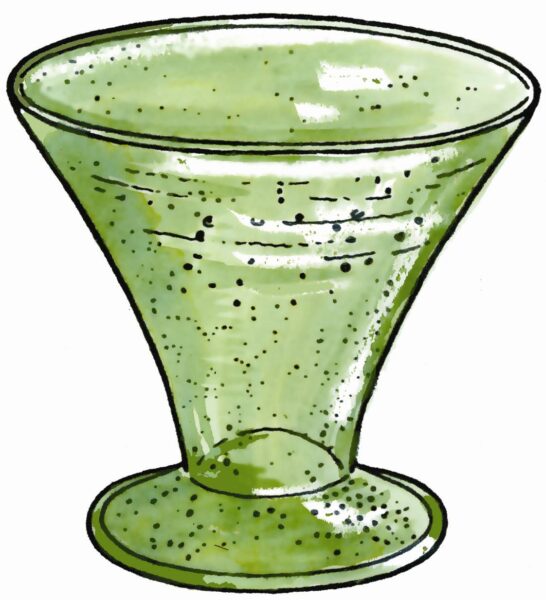
Illustration of Forest Glass, by Tony Barton
An industry abandoned
It remains unclear why the glassmakers eventually left the region, abandoning their furnaces as they did – possibly in haste. Several theories have been put forward. It is possible that the end of the French Civil War offered the Huguenots religious liberty in their homeland once more.
However, it is also possible that they felt ‘driven out’ of the area. In 1592, the licence to make vessel glass was granted to Sir Jerome Bowes. He was well known for his dislike of illegal glassmakers. Sir Jerome dispatched men countrywide to shut down clandestine operations.
Finally, the ban on the burning of timber during the rule of James I, when the King insisted it be preserved for shipbuilding, may well have ended the industry. This would have left the glassmakers unable to work.
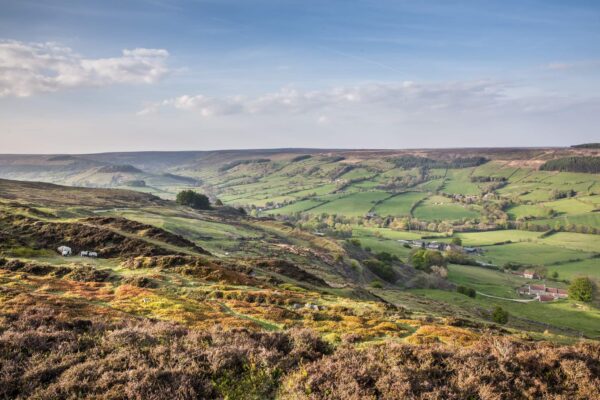
The remote setting of Rosedale today, taken by Angela Waites Photography
